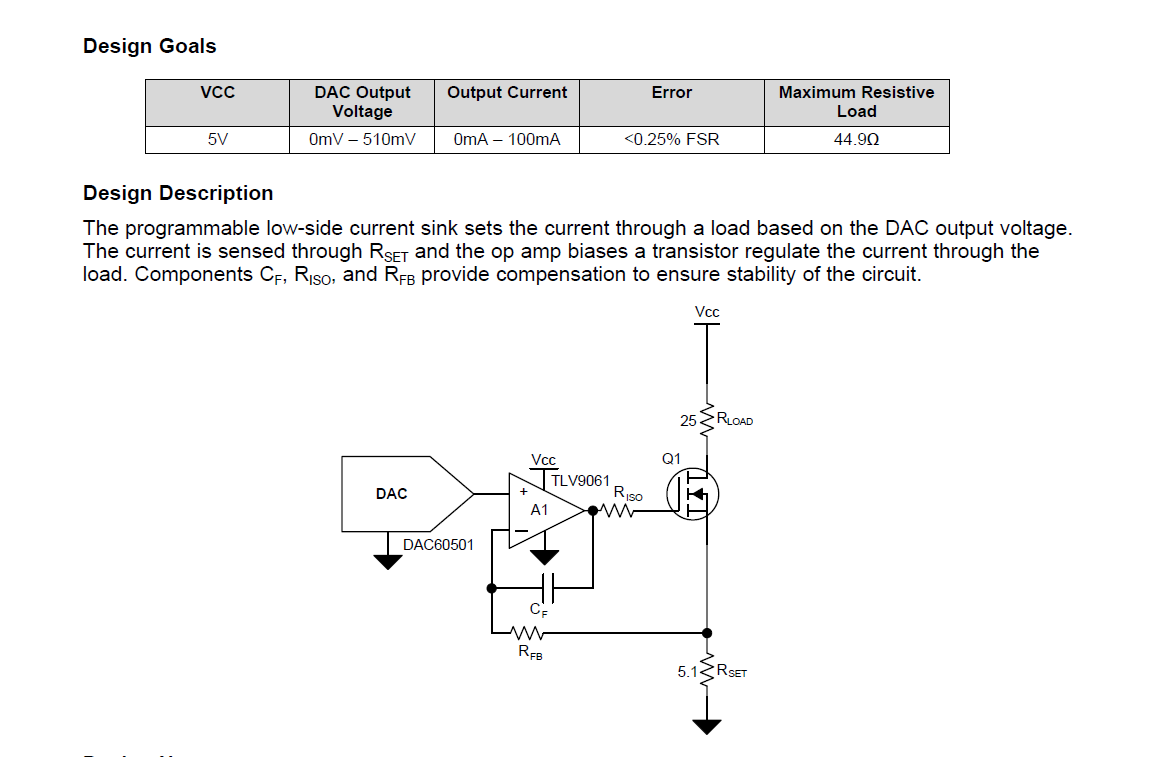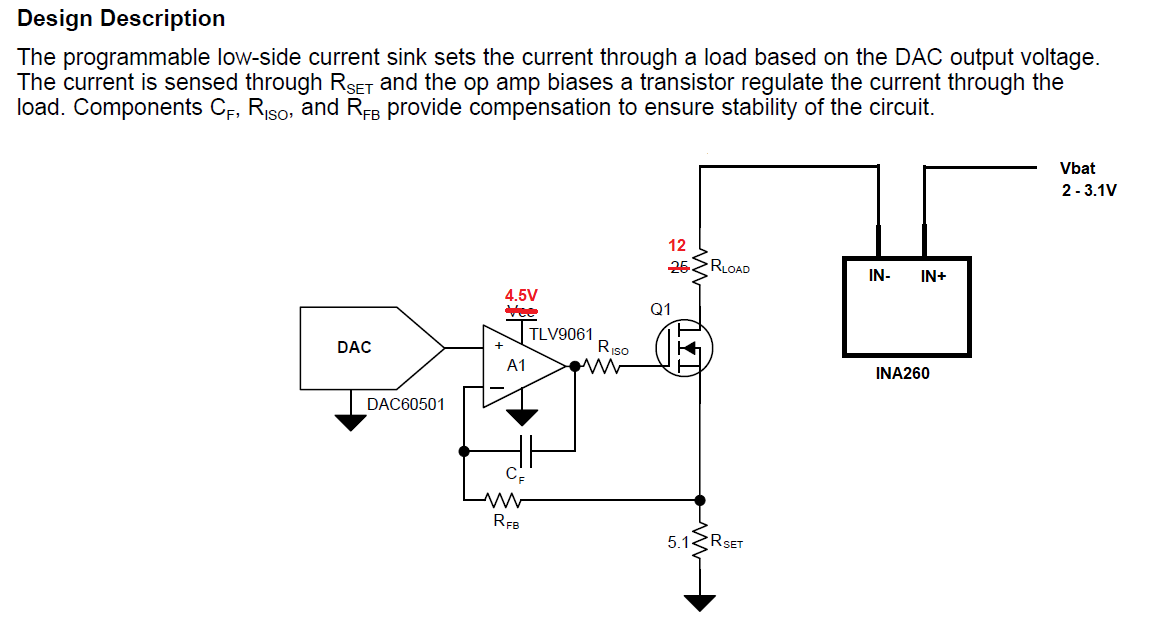Other Parts Discussed in Thread: INA260, CSD13202Q2
Hello,
For the testing of LiMnO2 batteries, i would like to build a few test circuits for internal use. LiMnO2 batteries are lithium batteries, that usually have a voltage of 3V, which drops down to 2V if they get empty. Also, these batteries tend do be only measurable on some mA of load, if measured in open circuit, the measurement is not very precise. Also, for lifetime estimation, i need a device that discharges the battery.
I found the constant current sink circuit in SLAA868:
I modfied the schematic to show what it would look like in my circuit. There will be also INA260 for current measurement and voltage measurement
I've calculated the maximum resistivity load for an input of 2V, which would be 14.9 Ohms.
The maximum supply voltage of the DAC and OPAMP would be 4.5V, which comes from a filtered 5V source.
I'm unsure about the following parts:
1.) Is my schematic correct and would work?
2.) How is the mosfet choosen? What parameters are important? Which mosfet would suit best here?
3:) How are the Parts Rfb, Riso and Cf choosen?



